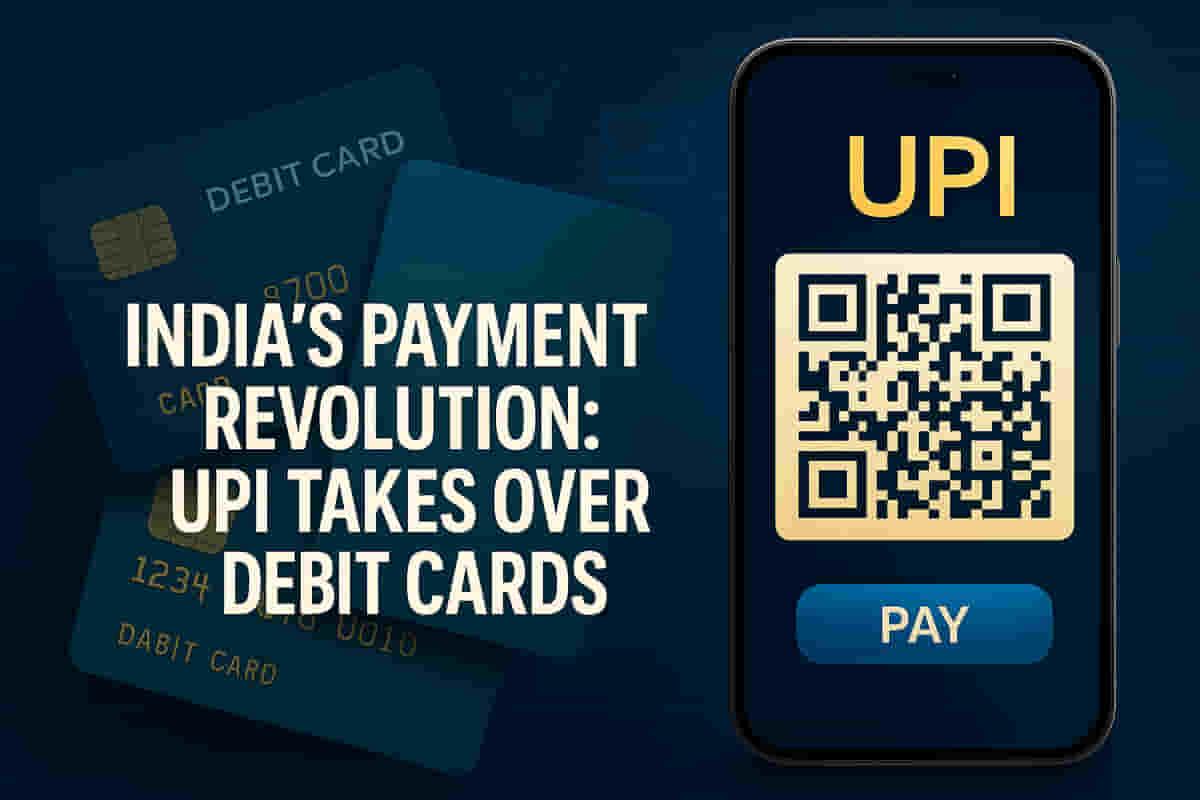UPI Dominance Surges, Debit Card Usage Declines Sharply in India
Banking/Finance
|
30th October 2025, 11:22 AM

▶
Short Description :
Detailed Coverage :
Debit cards, once the primary payment tool for Indian consumers at merchant outlets, are rapidly losing ground to the Unified Payments Interface (UPI). A report by Worldline India indicates that debit card usage for point-of-sale transactions has declined by nearly 8% year-on-year in the first half of 2025. This trend is attributed to UPI's growing dominance, especially for smaller, everyday purchases like groceries and utility bills, effectively cannibalizing debit card transactions. Merchants favor UPI for its easy onboarding, zero acceptance cost, and instant fund transfers. Consumers appreciate its speed and the ubiquitous QR code payment system.
During the first half of 2025, UPI saw a 35% year-on-year surge in transaction volume to 106.4 billion, while total point-of-sale volumes grew only 4%. Credit card transactions rose 25%, whereas debit card usage plummeted by 24% to 516 million transactions. Experts note a new payment hierarchy: UPI handles frequent, small payments, credit cards capture high-value transactions, and debit cards are increasingly limited to cash withdrawals. The rise of 'credit on UPI' and Buy Now, Pay Later (BNPL) options is also expected to shift more EMI flows away from traditional credit cards.
Impact This trend poses a significant challenge for banks and payment providers, particularly those heavily reliant on debit card interchange fees. The dominance of UPI in low-value transactions puts pressure on revenue models. While UPI expands digital payment adoption, ensuring viable economics for financial institutions remains a key concern.
Difficult Terms UPI: Unified Payments Interface, a real-time payment system developed by the National Payments Corporation of India (NPCI) that allows instant money transfer between bank accounts. Point-of-Sale (POS): A place where a retail transaction is completed, such as a store counter or a payment terminal. QR Code: Quick Response code, a type of matrix barcode that can be scanned by devices like smartphones to access information or initiate actions, such as payments. Kiranas: Small neighborhood retail stores, common in India. Buy Now, Pay Later (BNPL): A type of short-term financing that allows consumers to make purchases and pay for them over time, often in interest-free installments.